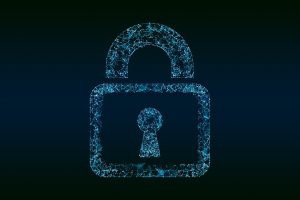
Compliance vs. Security: Why Your Business Needs Both to Stay Protected
Introduction
In today’s digital landscape, compliance and security are two critical components of a strong cybersecurity strategy. However, many organizations confuse regulatory compliance with robust security. While compliance ensures that a business meets legal and industry requirements, security focuses on proactively protecting systems, data, and users from cyber threats.
To truly safeguard an organization, businesses must understand that compliance does not equal security. A company can be fully compliant but still vulnerable to cyberattacks if security measures are not properly implemented. In this article, we’ll explore the key differences between compliance and security, why both are essential, and how businesses can integrate them for comprehensive protection.
What is Compliance?
Compliance refers to meeting regulatory, industry, and legal requirements that govern how organizations handle data, security, and business operations. These regulations are designed to ensure data protection, consumer privacy, and risk management.
Key Compliance Frameworks
Organizations must adhere to different compliance frameworks based on their industry and geographic location. Some major compliance standards include:
✅ ISO 27001 – International standard for information security management systems (ISMS).
✅ NIST 800-53 – U.S. federal standard for security and risk management.
✅ SOC 2 – Security framework for service providers handling customer data.
✅ GDPR – European data privacy law regulating personal data protection.
✅ HIPAA – U.S. regulation for healthcare data security and patient privacy.
✅ FedRAMP – Federal Risk and Authorization Management Program for cloud security compliance.
Compliance frameworks set minimum security requirements, but they don’t guarantee full protection against evolving cyber threats.
What is Security?
Security refers to the policies, technologies, and practices used to protect systems, networks, and data from cyber threats. Unlike compliance, which is regulatory-driven, security is risk-driven, aiming to proactively detect, prevent, and mitigate cyberattacks.
Key Components of Security
To effectively protect assets, organizations must implement comprehensive security measures, including:
✅ Identity & Access Management (IAM) – Enforces strict authentication and authorization controls.
✅ Multi-Factor Authentication (MFA) – Strengthens login security with multiple verification steps.
✅ Zero Trust Architecture (ZTA) – Operates on a “never trust, always verify” principle to restrict unauthorized access.
✅ Data Encryption – Protects sensitive data at rest and in transit.
✅ Endpoint Security – Secures devices against malware, ransomware, and cyber threats.
✅ Security Information & Event Management (SIEM) – Detects and analyzes suspicious activities in real time.
✅ Penetration Testing & Vulnerability Assessments – Identifies weaknesses before attackers exploit them.
Security measures go beyond compliance, ensuring organizations are proactively protected against cyber threats.
Compliance vs. Security: Key Differences
| Aspect | Compliance | Security |
|---|---|---|
| Objective | Meets regulatory requirements | Protects systems, networks, and data from attacks |
| Focus | Legal & industry mandates | Cyber threat prevention & risk management |
| Scope | Ensures organizations follow specific laws | Implements technical and strategic defenses |
| Approach | Checklist-based | Continuous monitoring & threat detection |
| Effectiveness | Can be compliant but not secure | Security provides proactive protection beyond compliance |
A business that is compliant but not secure remains vulnerable to cyberattacks, whereas a business that is secure but not compliant risks legal penalties, fines, and reputational damage.
Why Your Business Needs Both Compliance and Security
1. Compliance is a Starting Point, Not an Endpoint
Compliance frameworks establish baseline security measures, but businesses must go beyond these requirements to fully protect sensitive data and infrastructure.
2. Compliance Does Not Cover All Cyber Threats
Regulations define security standards, but cyber threats evolve daily. A compliance checklist cannot protect against zero-day attacks, ransomware, or insider threats.
3. Security Strengthens Compliance Efforts
A strong cybersecurity program makes compliance easier. Implementing Zero Trust, encryption, and continuous monitoring helps businesses stay compliant without last-minute audits.
4. Compliance Protects Against Legal & Financial Risks
Non-compliance can result in heavy fines, legal action, and reputational damage. Integrating security ensures compliance remains intact while preventing costly data breaches.
5. Security Enhances Business Resilience & Customer Trust
Customers and partners expect businesses to protect their data. A strong security and compliance strategy demonstrates commitment to privacy, risk management, and business integrity.
How to Integrate Compliance & Security for Maximum Protection
1. Implement Risk-Based Compliance Strategies
Instead of treating compliance as a box-checking exercise, businesses should adopt a risk-driven approach that aligns security efforts with compliance goals.
2. Align Security Frameworks with Compliance Requirements
🔹 Use NIST 800-53 & ISO 27001 for aligning risk management with compliance.
🔹 Implement SOC 2 controls to protect customer data security and privacy.
🔹 Follow GDPR, HIPAA, and FedRAMP security guidelines for regulated industries.
3. Use Automation for Continuous Monitoring
🔹 Deploy AI-powered threat detection & SIEM solutions to monitor compliance in real-time.
🔹 Automate compliance audits, security patching, and access reviews.
🔹 Implement Cloud Security Posture Management (CSPM) tools to prevent misconfigurations.
4. Conduct Regular Security Assessments & Audits
🔹 Perform penetration testing, red team exercises, and risk assessments to validate security controls.
🔹 Conduct continuous compliance audits to ensure alignment with regulatory standards.
🔹 Establish incident response and disaster recovery plans to mitigate security incidents.



